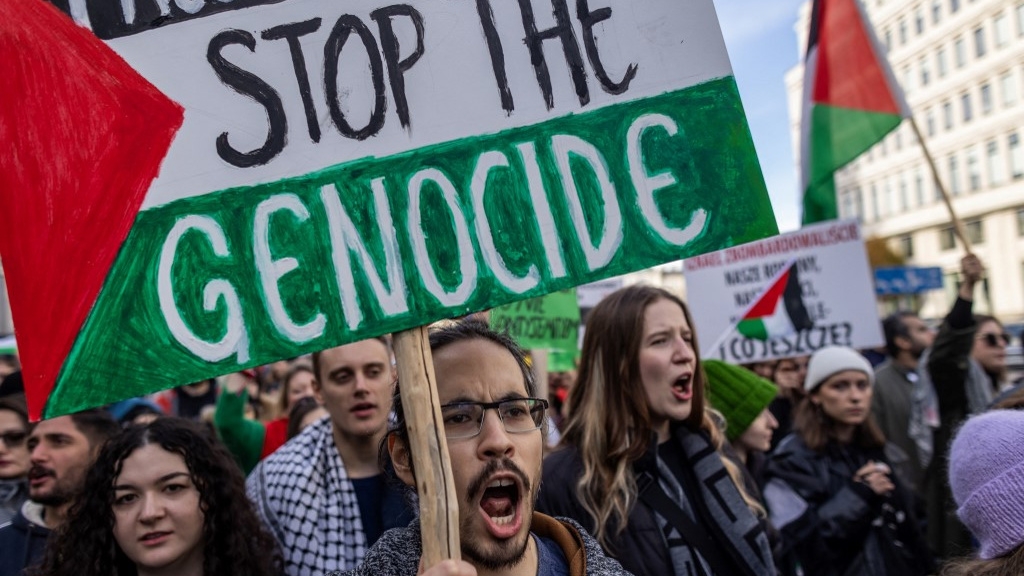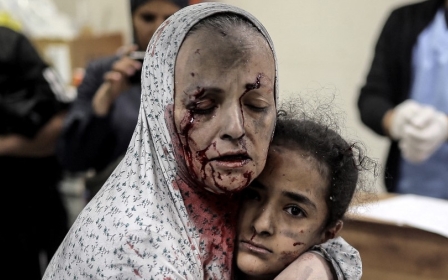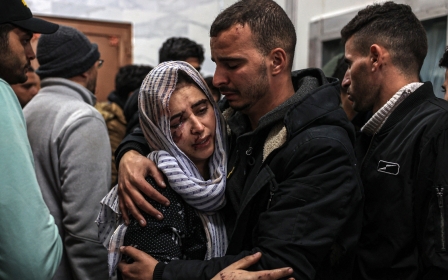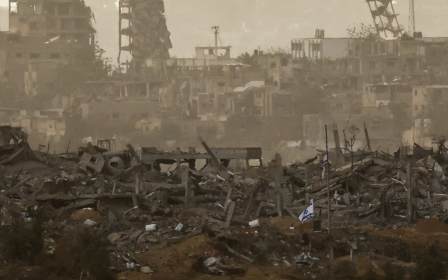War on Gaza: Israel's eight methods of genocide

Now in its third month, the levelling of Gaza, which has caused unprecedented destruction to people, infrastructure and habitats, seems unstoppable.
Neither genuine US pressure to limit civilian casualties, nor the rhetoric of Arab states - which could not even agree on joint actions, such as an oil embargo or the temporary severance of formal diplomatic relations - have managed to stop, or even moderate, Israel’s savage assault on Gaza. UN resolutions and mass global protests have also proven ineffective.
Unbelievable as it sounds, it seems that the fate of millions of Palestinians will continue to be decided by just two men: Israeli Prime Minister Benjamin Netanyahu and US President Joe Biden.
Israel has declared that its campaign will last for many more months, possibly with no additional truce periods. Far from de-escalating the offensive or ensuring a significantly lower civilian death toll - as the US has pushed for, not so much out of concern for Palestinian lives as out of fears of a broader regional war and damage to international support for Washington and Tel Aviv - Israel has instead escalated its attacks since the brief November truce.
It is beyond doubt that Israel has already committed a series of war crimes. This is not surprising for a state that has, for decades, developed and cultivated that habit - and even less so when one remembers that Israel was founded on ethnic cleansing.
War crimes, discrimination against non-Jews, and contempt for international law have been major parts of Israel’s DNA since its creation in 1948, and even before, if one remembers Zionist paramilitaries such as Irgun and the Haganah. But there is now debate over whether Israel’s massacres have reached the level of genocide in the legal sense of the term.
There are many popular misconceptions about what constitutes genocide, the main one being that in order to qualify, atrocities must reach the scale and level of the Holocaust or exterminate almost an entire people or group. This is not the case.
Defining genocide
According to Article II of the Genocide Convention, genocide means any of the following acts committed with intent to destroy, in whole or in part, a national, ethnic, racial or religious group: killing members of the group; causing them serious bodily or mental harm; deliberately inflicting conditions of life aiming to bring about the group’s destruction; imposing measures intended to prevent births; or forcibly transferring children to another group.
Israel’s actions in Gaza and their horrific consequences on the entire civilian population, alongside the repeated declarations of Israeli state officials that strongly suggest deliberate intent to wipe out or at least harm as many Palestinians as possible, leave little doubt that the bar has been reached and long since surpassed. Many officials, journalists and members of civil society have publicly called this a genocide.
Follow Middle East Eye's live coverage of the Israel-Palestine war
Despite some reservations, a consensus seems to be emerging among academics, legal scholars, and even former International Criminal Court prosecutors, who can certainly recognise a genocide when it is unfolding before their eyes.
Israel is systematically and methodically combining all those methods of death, with horrific results
History has taught us there are many ways to exterminate a group of people or deplete a population. But Israel’s campaign of genocide, ongoing since 1948, is defined by several characteristics: its permanent nature, the variation between “slow-motion” genocide and waves of brutal slaughter, and the rich array of techniques of mass death.
In the current moment, Israel is systematically and methodically combining all those methods of death, with horrific results. One can identify at least eight genocidal techniques that have converged in the state’s reaction to the 7 October attack by Hamas, which is proscribed as a terrorist organisation in the UK and other countries.
It appears that Israel seized this opportunity to take its slow-motion genocide to a whole new level of brutality.
The eight techniques
1. Kill them: Bomb Palestinians indiscriminately (here, media attention, pressure from allies such as the US, and international protests can have a certain effectiveness in restraining Israel). Despite Israel’s assertions that it is taking measures to protect civilians, the realities on the ground show otherwise, with non-combatants forming the bulk of the casualties. Schools, hospitals and apartment buildings have been directly targeted.
2. Starve them: This is being done through blockades of food and water supplies. Again, this is nothing new; it has long been part of a concerted and organised Israeli policy to deprive Palestinians of even the most fundamental of all life-sustaining resources, water.
3. Strip them of medical care: Israel is maximising the casualty count by destroying medical infrastructure, including hospitals, thus ensuring that many who might have been saved will instead die from untreated injuries.
4. Spread disease among them: The collapse of medical infrastructure, along with catastrophic living conditions, has guaranteed the spread of disease, risking another significant wave of deaths.
5. Exhaust them through forced evictions: Taking a page from the Armenian genocide, Israel is now using forced relocation, first from Gaza’s north to the south, then within the south, to make exhausted and often injured people move from one allegedly “safe area” to the next. A grid map published by Israel has divided southern Gaza into hundreds of tiny parcels, between which people are being forced to move at short notice to avoid bombs.
6. Destroy their environment: What is happening in Gaza is a veritable ecocide. The amount of environmental destruction, through everything from durable pollution to military ammunition, is enormous and could affect future generations.
7. Atomise their society: The systematic destruction of governmental and administrative structures under the pretext of fighting Hamas has upended Palestinian society. By displacing the majority of Gaza’s 2.3 million people, Israel is severing their social links; it is unclear how they will be able to recreate a society in the future, especially as Israel has tried to tie all civilians to Hamas and intends to maintain control over the territory and its resources for the foreseeable future.
8. Break their spirit: For decades, Israel has used psychological warfare to foster a sense of despair and helplessness among the population. This has been terribly effective among the most vulnerable: Gaza’s children, many of whom suffered from severe depression and suicidal thoughts even before the current offensive. Given that Israel also makes it nearly impossible for them to be treated, most will suffer long-term trauma.
The above eight methods are all forms of collective punishment, with consequences bound to last for at least a generation, even if the war were to end today.
The views expressed in this article belong to the author and do not necessarily reflect the editorial policy of Middle East Eye.
Middle East Eye propose une couverture et une analyse indépendantes et incomparables du Moyen-Orient, de l’Afrique du Nord et d’autres régions du monde. Pour en savoir plus sur la reprise de ce contenu et les frais qui s’appliquent, veuillez remplir ce formulaire [en anglais]. Pour en savoir plus sur MEE, cliquez ici [en anglais].






